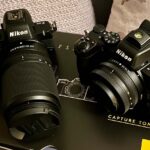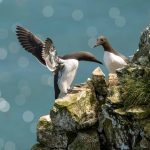Hey there fellow wildlife enthusiasts! Today, I want to share with you the story of how I got my photograph of the Golden Plover. It’s been the spring bank holiday 2023 in the UK, and I had a four-day weekend off work. The weather was forecasted as fine and sunny, so I was excited to get out into the field.
Golden Plover has been on my wildlife photography lifer list right from day one, and I had been waiting for the perfect opportunity to capture this stunning bird. I was thrilled when a local bird-watching club sightings page informed me that there were 700+ Golden Plover at Cockersands.
Research and Travel:
I checked the tides for Saturday and unfortunately, the tide was going to be out in the morning. The tide being in is crucial for spotting and photographing shorebirds, so I was a little disappointed. However, since Cockersands was only a 40-minute drive away, I decided to go anyway.

Setting up the shot:
Armed with my scope, camera, and camouflage ghillie suit, I set out walking along the sea wall, scanning the sands for Golden Plover. After about 10 minutes of walking, I spotted a group of around 50 birds amongst the seaweed, quite close to the sea wall.
I was very excited but needed to remain calm. I wanted to get close enough for a photograph, but I didn’t want to disturb or flush them away. This might have been my only chance to see them on our Lancashire coast.
With the plover in my sight, it was time to set up the shot. I knew that the seaweed wouldn’t make a perfect backdrop for the birds, but the golden hour light was working its magic on their plumage.
I found a spot on the sand clear of seaweed and got down on the ground.
My camera was resting on a beanbag, and I adjusted the aperture between f6.3 and f9 to get plenty of depth of field while still having a decent shutter speed to combat long lens camera shake.
I set my ISO to auto, but there was plenty of light, and the camera was metering very low at around 250.
Camera settings and why I used them:
My focal length of my lens is 400-800 zoom, so I didn’t need to get too close. The sand was extremely wet, so I found a spot that was clear of seaweed and got led down.
The seaweed wasn’t the perfect ground and backdrop to be photographing them, but we have to make the most of what we get.
I choose apertures between f6.3 and f9 to get plenty of depth of field and still have a decent shutter speed to combat long lens camera shake.
The ISO was set to auto, but there was plenty of consistent light so I probably could have set it manually.
Being low down and the birds blending in to the seaweed, the AF was struggling, so I set it to manual and used focus peaking. When shooting with a long focal length, I like to make most of the 11fps to ensure I get an image that is pin-sharp.
Overall experience:
I spent just over two hours watching the Golden Plover. They obviously knew I was there, and they remained still and didn’t see me as a threat. It was the perfect setting I wanted to photograph them, but still, an enjoyable experience.
Facts about Golden Plover:
These beautiful birds are a member of the plover family and are known for their distinctive golden summer plumage. They have a wide range, breeding in Arctic and sub-Arctic regions and migrating to Europe, Asia, and Africa during the winter.
And that’s the story of how I captured my photograph of the Golden Plover.
If you have any tips or tricks for photographing shorebirds, be sure to leave them in the comments below. And don’t forget to share this post with your friends who are also passionate about wildlife photography.
Until next time, keep exploring.
Scott



